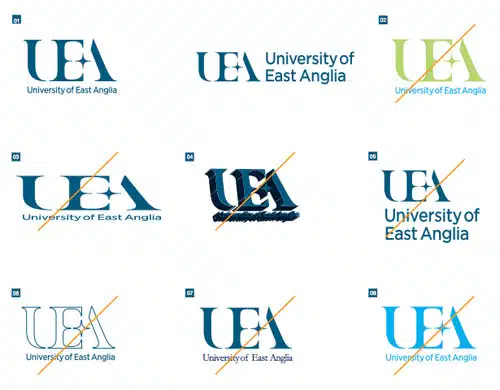A common question that we get asked is how should a trade mark be used once you have obtained registration. Luckily, there are guidelines available for this, and I’ll summarise them in this post.
Imagine a customer looking to buy a new pair of sunglasses. She finds the section for her favourite brand only to notice that the font in their logo is different. This can cause confusion and might end up costing the company a sale. Incorrect use of a trade mark can also jeopardise its validity and protection against copycats.
Having and following guidelines for trade mark usage are essential in building a brand. After all, you’d want strong brand recognition. Most importantly, proper use of a trade mark will protect it from unlawful use. So how should you use a trade mark?
A logo trade mark and its consistent use
The colour, format, font and placement of a logo is very important for branding. If your logo was filed with a specific colour scheme, then it should always be used in those colours. When providing your trade mark to a third party, you should provide the colour specification (pantone). You should also create and provide brand guidelines on the way your trade mark should be used and printed to everyone using your branding.
The image from University of East Anglia below displays how their logo should be used.
Using the ® icon in advertising and labelling
The ® icon is used to alert the public that a sign is a protected mark and discourage others from using it. Although not compulsory, you should use it in advertisements and labels because of the wider visibility that these receive. Using it will deter copycats from taking advantage of a trade mark.
A trade mark is an adjective
A trade mark is an adjective so it cannot be expressed as a noun or or verb. An example of this is as follows:
Correct: I had a coffee from Starbucks in the morning.
Incorrect: I had a Starbucks in the morning.
I’ll use another brand to illustrate the point. Ray-Ban would need to be used as follows:
Correct: Buy the latest Ray-Ban sunglasses on sale now!
Incorrect: Latest Ray-Bans are on sale now!
Incorrect use of a trade mark combined with its common use can make it genericised. In this case, a trade mark become so common that they lose their value as a trade mark. This was the case with trade marks such as Hoover, Aspirin and Kleenex. A trade mark being genericised is more common for very well known brands than lesser known ones.
Further guidelines for trade mark use
For greater impact, the trade mark can be distinguished using italic, bold or capitalised letters. It’s also common to monitor the use of your trade marks by third parties. If you license or franchise your brand, it is necessary to keep an eye on how others are using it. Finally, there should be a regular review of your trade marks to see if they need to be registered, licensed or renewed.
If you would like further information about use of your trade mark, please contact us on 020 3475 6751 or email us at info@carterbond.co.uk.



